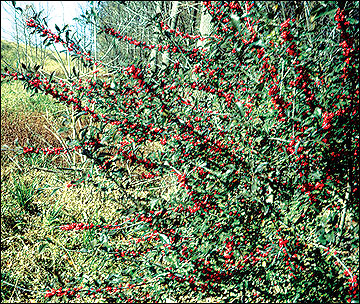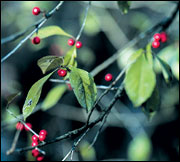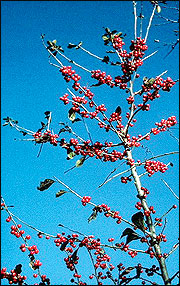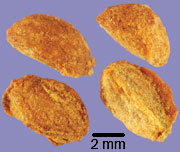Possum haw
- Ilex decidua
- Deciduous holly
Woody
The dense foliage of possum haw can provide summer thermal cover.
Rex Hamilton, USDA-NRCS Plants Database
Description
Possum haw grows mostly as a shrub but sometimes as a tree up to 30 feet tall. The twigs are slender with short, spurlike lateral twigs. Possum haw can be dioecious, which means male and female flowers are borne on separate plants. The white flowers bloom in mid-spring either singularly or in clusters. Fruits are orange to red and globe-shaped, ripen in fall, and are persistent throughout winter. Female shrubs can be heavy fruit producers. Possum haw can occur in many habitats from glades and rocky, open woods to pond borders, swamps, and low wet woods along streams.
Use by bobwhites
Many birds, including quail, consume large quantities of possum haw fruits, particularly in hard winter weather or when other food supplies become scarce. Possum haw may provide summer thermal cover and limited escape cover.






